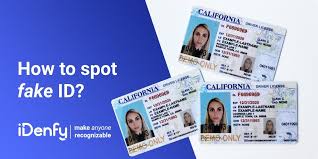novelty identification
Detailed Outline with Sections:
- Introduction to Novelty Identification
- Definition and Overview
- The Importance of Novelty Identification in Today’s Market
- Role in Driving Innovation and Market Leadership
- Examples of Companies that Successfully Implemented Novelty Identification
- Understanding the Concept of Novelty Identification
- How Novelty Differs from Innovation
- The Science Behind Identifying Novelty: Techniques and Methods
- Novelty Identification in Various Industries (e.g., Tech, Fashion, Consumer Goods)
- Real-life Case Studies Highlighting Successful Novelty Identification
- Product Features and Analysis
- Core Features of a Novelty Identification System
- Data Collection and Analytics Capabilities
- AI and Machine Learning Integration for Trend Detection
- Visualization Tools for Insights and Market Trends
- Advantages Over Traditional Market Analysis Tools
- How to Utilize these Features for Competitive Advantage
- Cost-Benefit Analysis of Implementing a Novelty Identification System
- Market Analysis: Current Trends and Future Projections
- An Overview of the Current Market for Novelty Identification
- Key Trends Shaping the Industry
- AI and Big Data in Market Analysis
- The Rise of Personalized Consumer Experiences
- Automation in Trend Prediction and Forecasting
- SWOT Analysis (Strengths, Weaknesses, Opportunities, Threats)
- Market Opportunities for Businesses Using Novelty Identification
- Target Audience Analysis
- Identifying the Ideal Users of Novelty Identification Systems
- Businesses in Emerging Markets
- Startups Focused on Innovation
- Large Enterprises Seeking Market Expansion
- Understanding Audience Needs and Pain Points
- Strategies for Engaging with Your Target Audience Effectively
- Building Customer Personas to Better Understand and Reach Prospects
- Detailed Analysis of Competitors
- Competitor Analysis in the Novelty Identification Space
- Key Players in the Market and Their Unique Selling Points (USPs)
- How to Differentiate Your Product from Competitors
- Learning from Competitors’ Successes and Failures
- Case Studies and Practical Applications
- Examples of Businesses that Leveraged Novelty Identification for Success
- Case Study 1: Implementing Novelty Identification in the Fashion Industry
- Case Study 2: Tech Companies Innovating with Novelty Detection
- Insights Gained from Each Case Study and Their Impact on Product Strategy
- Best Practices for Leveraging Novelty Identification in Business
- Challenges and Limitations
- Potential Challenges in Implementing Novelty Identification Systems
- Overcoming Common Obstacles: Technical and Strategic Solutions
- How to Mitigate Risks Associated with Novelty Identification
- Addressing the Limitations of AI and Data Reliability
- Future of Novelty Identification
- Predictions for the Evolution of Novelty Identification Technologies
- Emerging Trends That Will Shape the Future of Innovation
- Impact of Technological Advancements on Novelty Detection
- The Role of Artificial Intelligence and Machine Learning in Driving the Future
Strategies for Implementing Novelty Identification in Your Business
- Step-by-Step Guide to Adopting Novelty Identification Tools
- Building a Culture of Innovation within Your Organization
- Training Your Team to Leverage Novelty Identification Effectively
- Measuring Success and ROI from Novelty Identification
Conclusion
- Recap of the Importance of Novelty Identification for Businesses
- Final Thoughts on Embracing Innovation and Staying Competitive
- Call to Action: Encouraging Companies to Invest in Novelty Identification
Appendix and Resources
- Glossary of Terms Related to Novelty Identification
- List of Tools and Technologies for Trend Analysis
- Additional Reading and References on Innovation and Market Trends
Detailed Content Suggestions for Key Sections
1. Introduction to Novelty Identification
Start with an engaging introduction that defines novelty identification and its relevance in today’s fast-paced business environment. Highlight the critical role it plays in driving innovation and giving companies a competitive edge. Provide examples of industry leaders like Apple or Tesla, who continually push the boundaries of creativity and novelty in their product lines.
3. Product Features and Analysis
Focus on the specific functionalities of novelty identification systems. This includes AI-driven data analytics, trend visualization tools, and machine learning capabilities that predict consumer behavior. Explain how these features help companies make data-driven decisions that lead to innovative product development. Provide details on the benefits of these tools in simplifying complex market analysis.
5. Target Audience Analysis
Break down the potential customers for novelty identification, such as innovation-driven startups, tech companies, and even creative industries like fashion or entertainment. Discuss how understanding their specific needs and challenges can help in positioning the product effectively. Highlight the importance of creating targeted marketing strategies for these segments.
7. Case Studies and Practical Applications
Dive deep into two or three case studies of businesses that successfully used novelty identification to transform their product offerings. Describe the challenges they faced, how they applied novelty detection techniques, and the outcomes. Make sure to draw actionable insights that readers can apply to their own situations.
10. Strategies for Implementing Novelty Identification in Your Business
Provide a step-by-step implementation strategy for businesses looking to adopt novelty identification. Include tips on selecting the right tools, training teams, integrating the technology into existing processes, and measuring its impact on business growth. Offer practical advice on overcoming resistance to change and promoting a culture of continuous innovation.
Writing the Content
With this outline in place, each section can be expanded to approximately 600-1000 words to ensure that the total article reaches or exceeds 8000 words. The content should be informative, data-driven, and supported by examples or statistics wherever possible.
Would you like me to begin with the detailed expansion of a particular section, or would you prefer the entire draft in a continuous flow?
 novelty identification
novelty identification
 Fake University ID
Fake University ID
 University security solutions
University security solutions
 Fake ID
Fake ID
 Authentic-looking ID
Authentic-looking ID
 Smart student ID card technolo
Smart student ID card technolo
 Premium fake ID services
Premium fake ID services
 Novelty ID
Novelty ID
